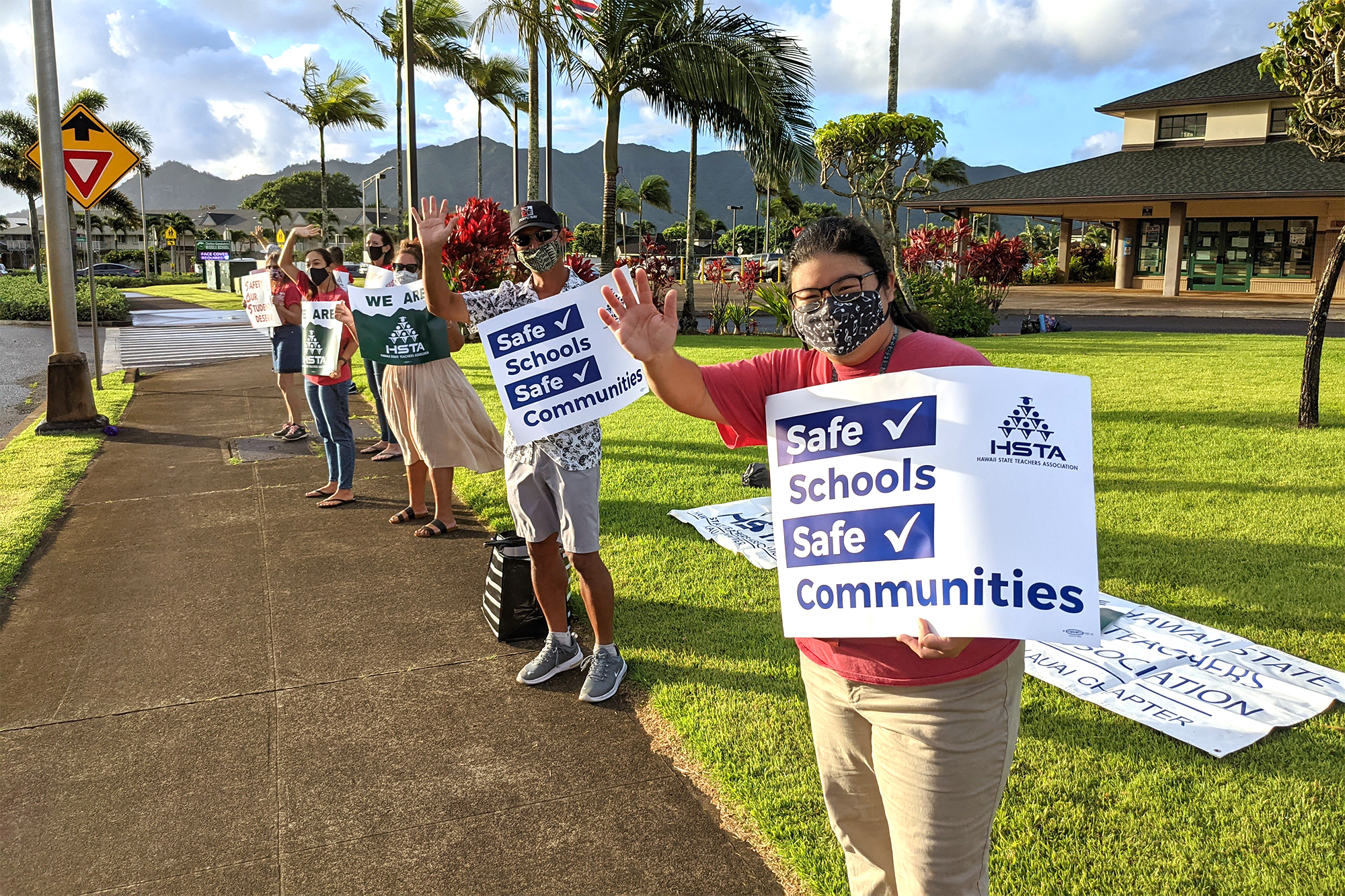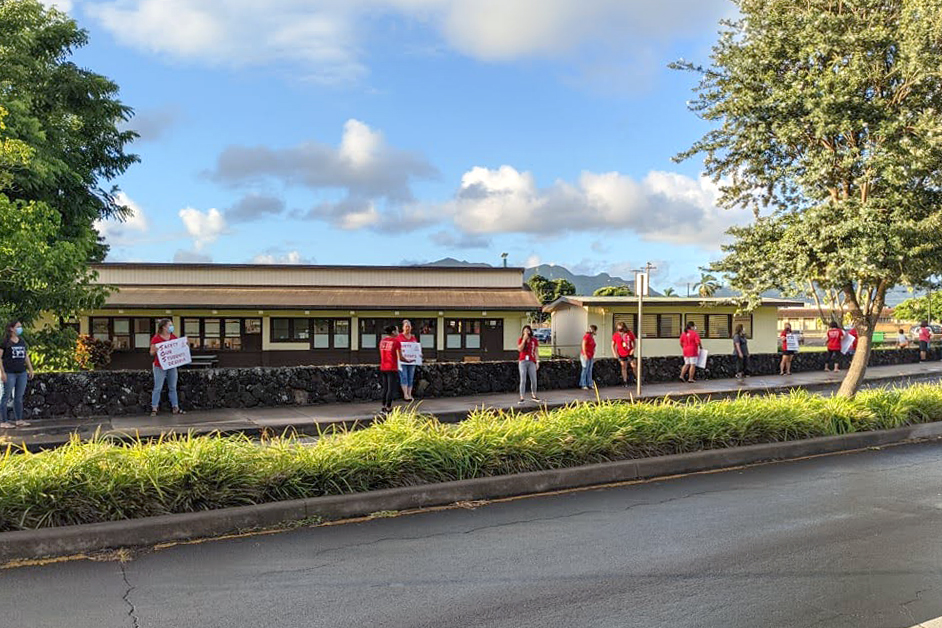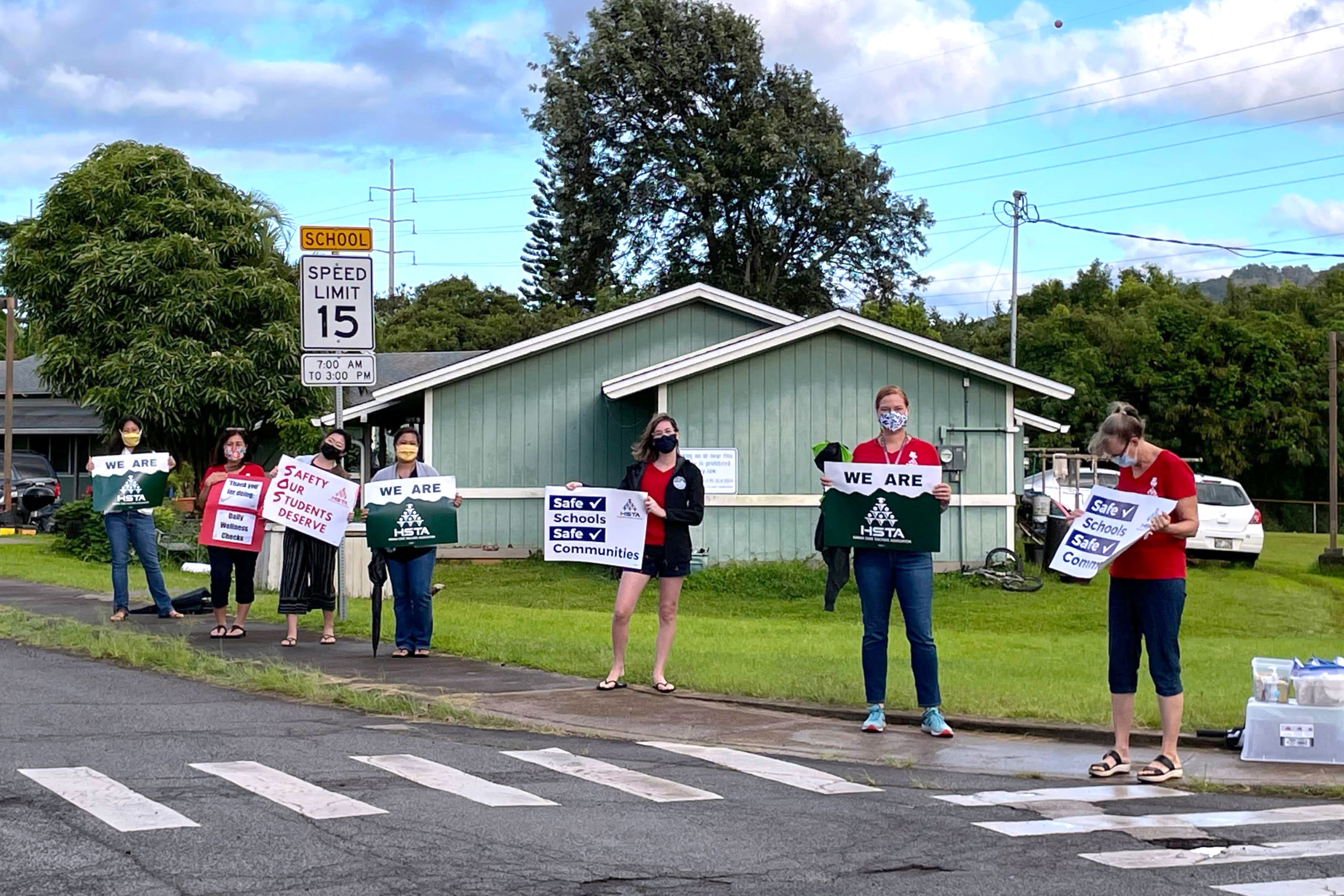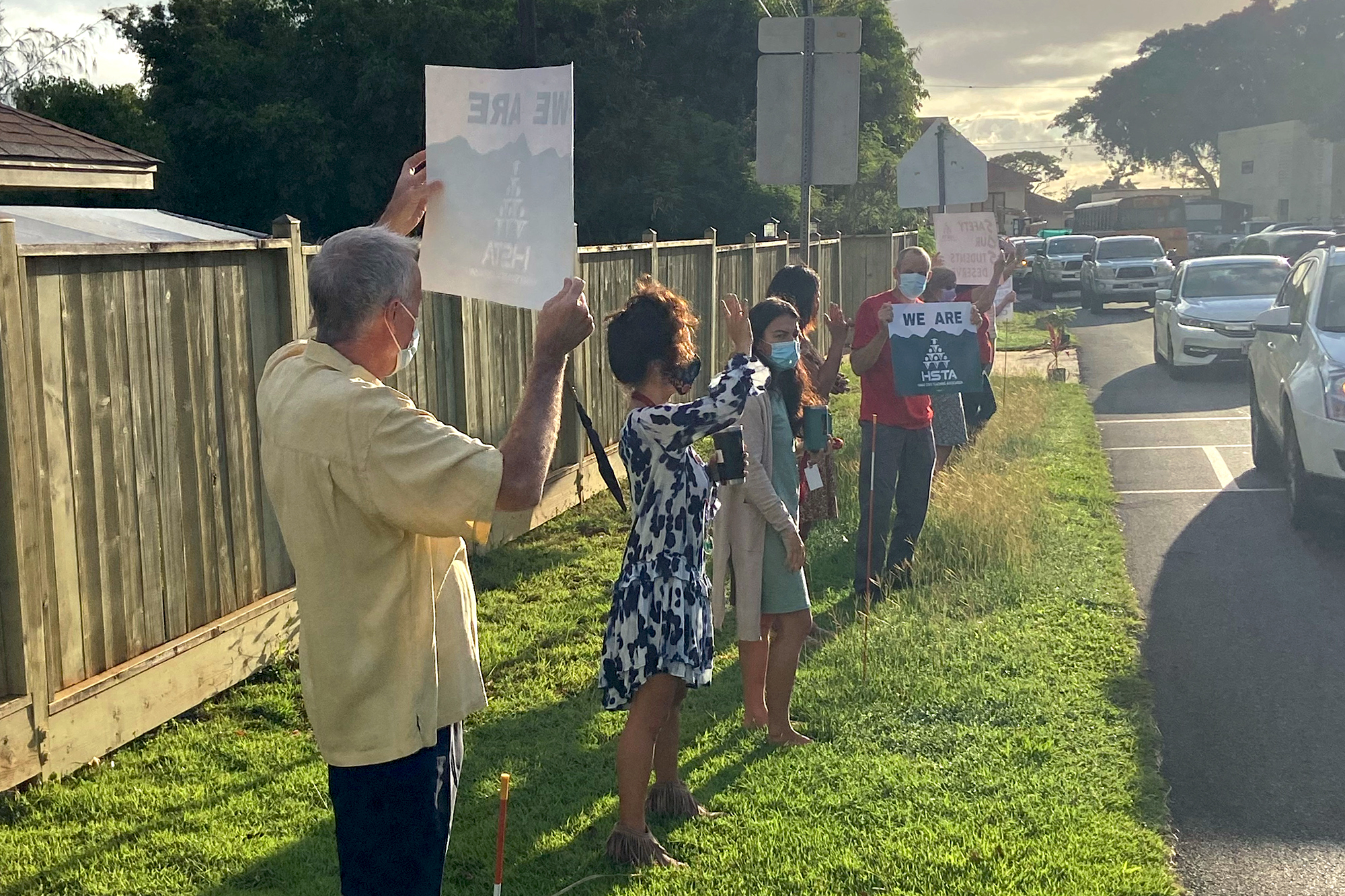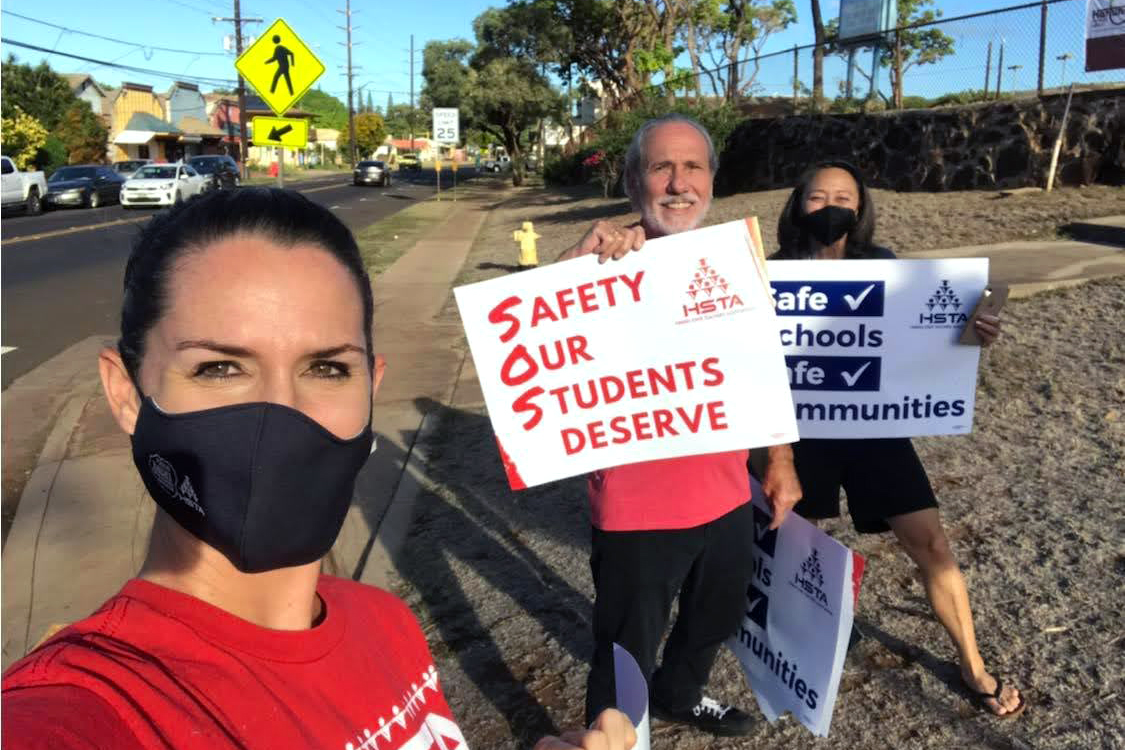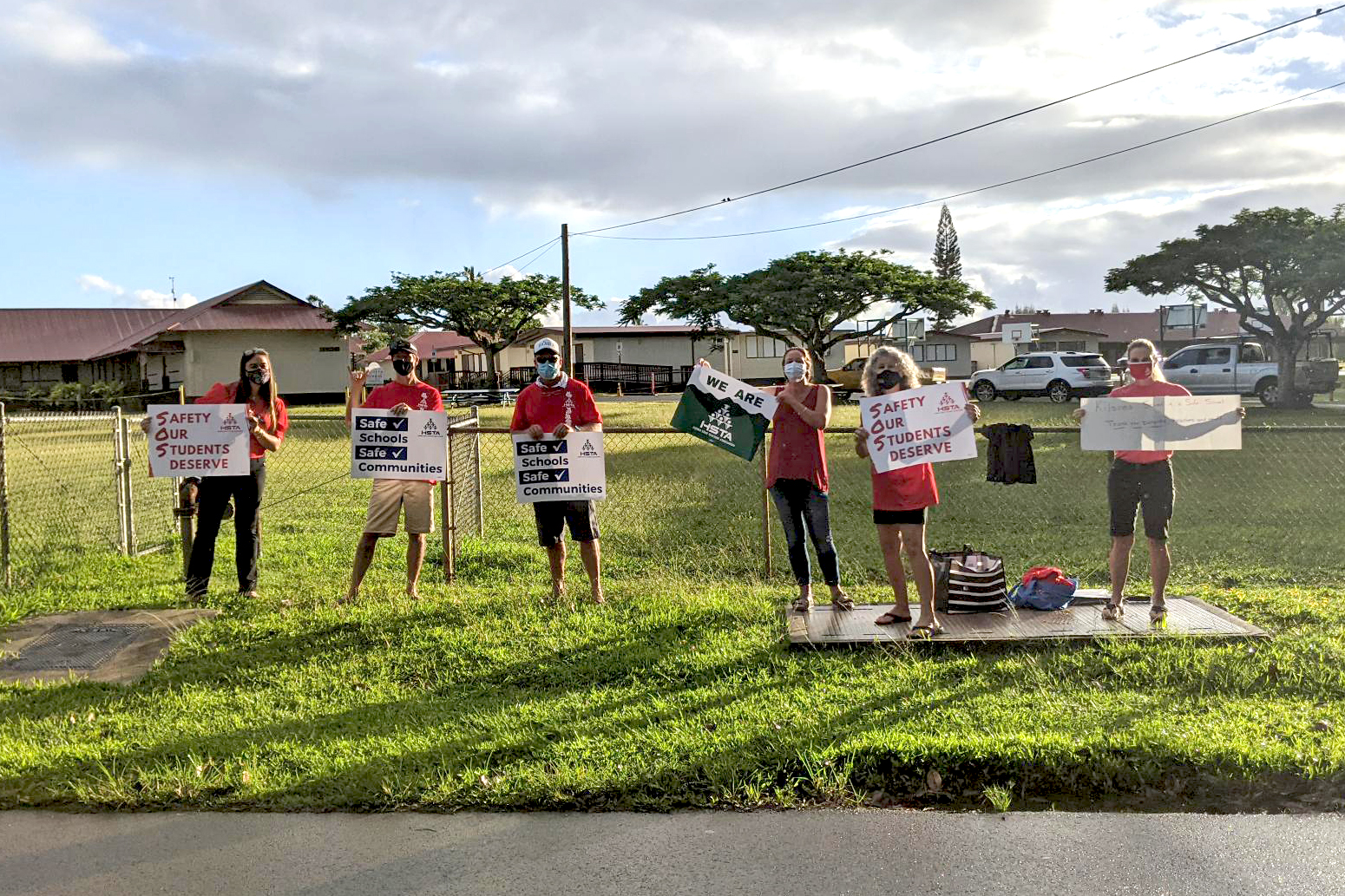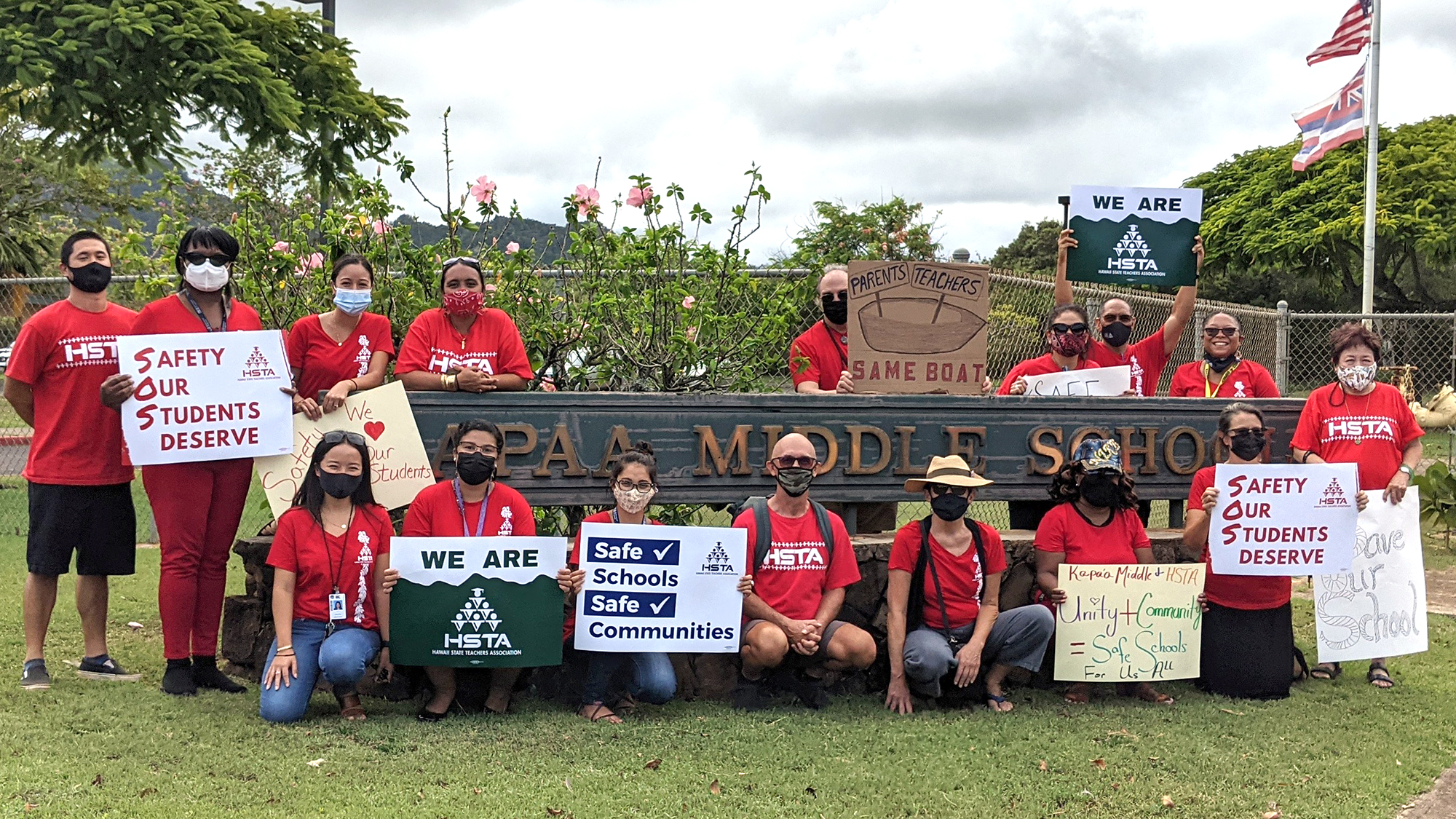Some teachers are being instructed not to tell students, parents of positive cases
Posted: September 29, 2021
More than 150 teachers from schools on Kauai took part in informational sign-waving before and after classes Tuesday, raising health concerns about a lack of consistent COVID-19 protocols, pressure to not report positive cases, and persistent staffing shortages that have forced principals and even the highest-ranking public school official on the Garden Island to fill in as a substitute.
Educators sign waved before and after classes Tuesday outside or near the following schools: Hanalei Elementary, Kalaheo Elementary, Chiefess Kamakahelei Middle, Kapaa Elementary, Kapaa Middle, Kapaa High, Kauai District Office, Kauai High, Kaumualii Elementary, Kekaha Elementary, Kilauea Elementary, Koloa Elementary, Waimea High, and Wilcox Elementary, among others.
Kauai educators told stories about students who’d just been diagnosed with COVID-19 on a Thursday returning to their classes just a few days later on a Monday. Other Kauai teachers said their administrators have instructed them not to tell students or their parents when there have been positive COVID-19 cases in their classrooms.
Many substitute teachers who are retired educators are staying away from schools and turning down opportunities to work statewide because of the pandemic’s higher risk to the elderly, and Kauai is no different.
Kauai’s Complex Area Superintendent Paul Zina is among those pressed into service to fill in as a substitute, along with principals and resource teachers on Kauai, who are being diverted from other duties because of the sub shortage, educators said.
“There was a sub shortage on Kauai before COVID-19, and now even more so,” said Sarah Tochiki, the band director at Chiefess Kamakahelei Middle School in Lihue.
In other cases, some educational assistants are filling in as substitutes, meaning students who normally benefit from support from the EAs provide in the classroom don’t have access to those services, Tochiki said.
On Maui, educators said last week that large numbers of students are sometimes kept in cafeterias because not enough substitutes are available to maintain separate classes when teachers are either isolated because they’re close contacts or are sick with COVID-19.
Sarah Kern is a 7th-grade science teacher at Lihue’s Chiefess Kamakahelei Middle.
“One of the things that frustrates teachers on Kauai is that there’s inconsistent communication about students who are testing positive and/or have to quarantine regarding how long they’re going to be out and when they’re coming back,” Kern said.
“It makes it hard to do our job as teachers because when you find out a student is quarantined, we are providing work for them that they can do when they are at home,” Kern added. “It’s much more difficult to plan and create materials that can be sent home if we don’t know for how long the student will be at home.”
“It makes us nervous and scared for our health,” Kern said, for example when a student tested positive three days ago yet is allowed to return to class quickly, “and we don’t know why and we thought they were going to be quarantined for 10 days but they quarantined for four days.”
“There are inconsistencies among our schools across Kauai and across the state. We currently don’t have a memorandum of understanding with our employer which we did have last school year, which was something staff, students and their families could rely on for basic safety protocols and guidance during this pandemic,” Kern added.
“Right now, everything is put on the administration of the school and also the teachers at the school to figure out what the policies are at the school and how strictly they will or will not be enforced, which has left our school with a very inconsistent situation,” Kern said.
Tochiki, who also serves as vice president of the Hawaii State Teachers Association’s Kauai Chapter, said, “Everybody else at school is just completely exhausted because we all are working hard but it doesn’t seem we really understand what the plan is to keep the schools and students safe.”
“We need a plan where the people at the top are really listening and they can help us, as opposed to us trying to invent the wheel over and over again, because no one’s listening at the top,” Tochiki added.
School-based COVID-19 testing is happening at many Kauai schools, Tochiki said, “but it’s slow.”
The turnaround time for results is two days, she Tochiki said, contrary to guidance from the U.S. Centers for Disease Control and Prevention, which says school testing results should be ready within 24 hours.
HSTA President Osa Tui, Jr. said, “I literally got a message this morning from one of the Kauai elementary schools where there are positive cases, but the ‘infectious time’ for one of the kids was only over the weekend, so they’re not going to do any close contact identification for the class.”
“So it’s very frustrating to the teachers at that school,” Tui added. “A lot of the time our teachers have been left out of the close contact identification process altogether. And our teachers are the ones who know what’s going with the students. Whether one student likes to get up and rove around the classroom or stays in their seat, keeps their mask on or not.”
HSTA represents 740 teachers at Kauai public and charter schools, including counselors, librarians, and registrars.
Educators on all islands have held various informational picketing events raising health concerns outside schools and state offices over the last two weeks, including HSTA’s Leeward Chapter Sept. 14, Maui and Honolulu Chapters on Sept. 21, and Hilo Chapter Sept. 24.


